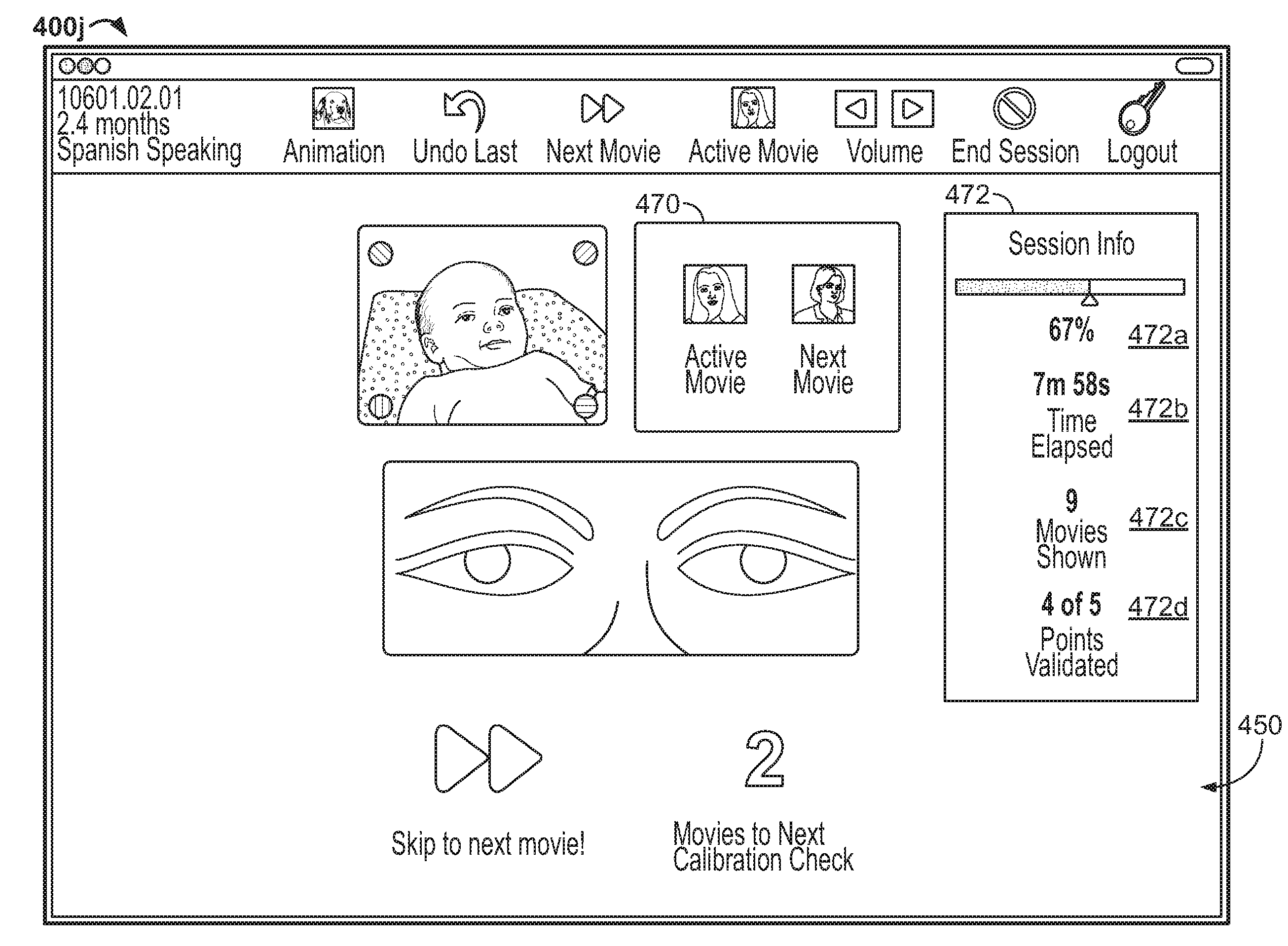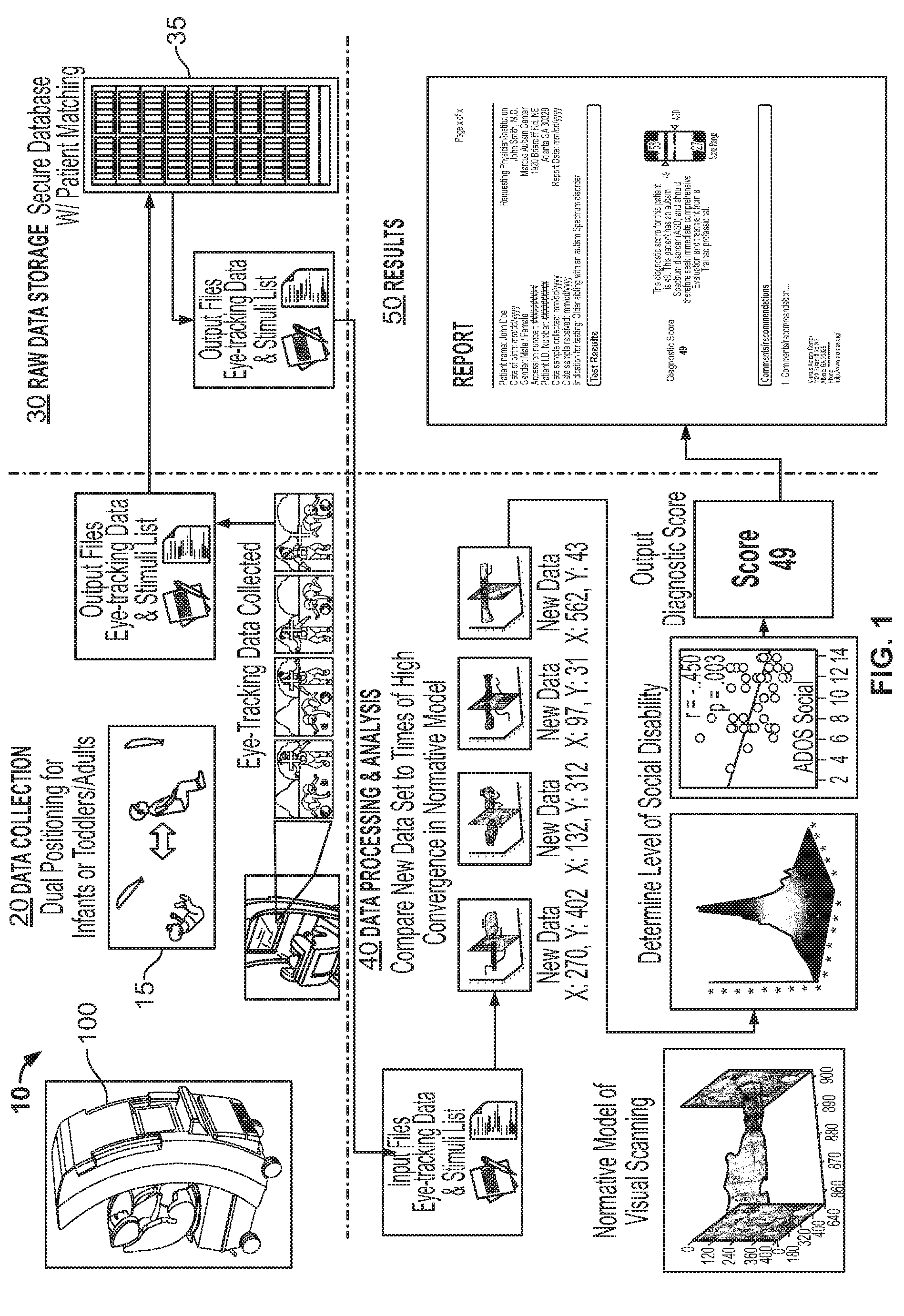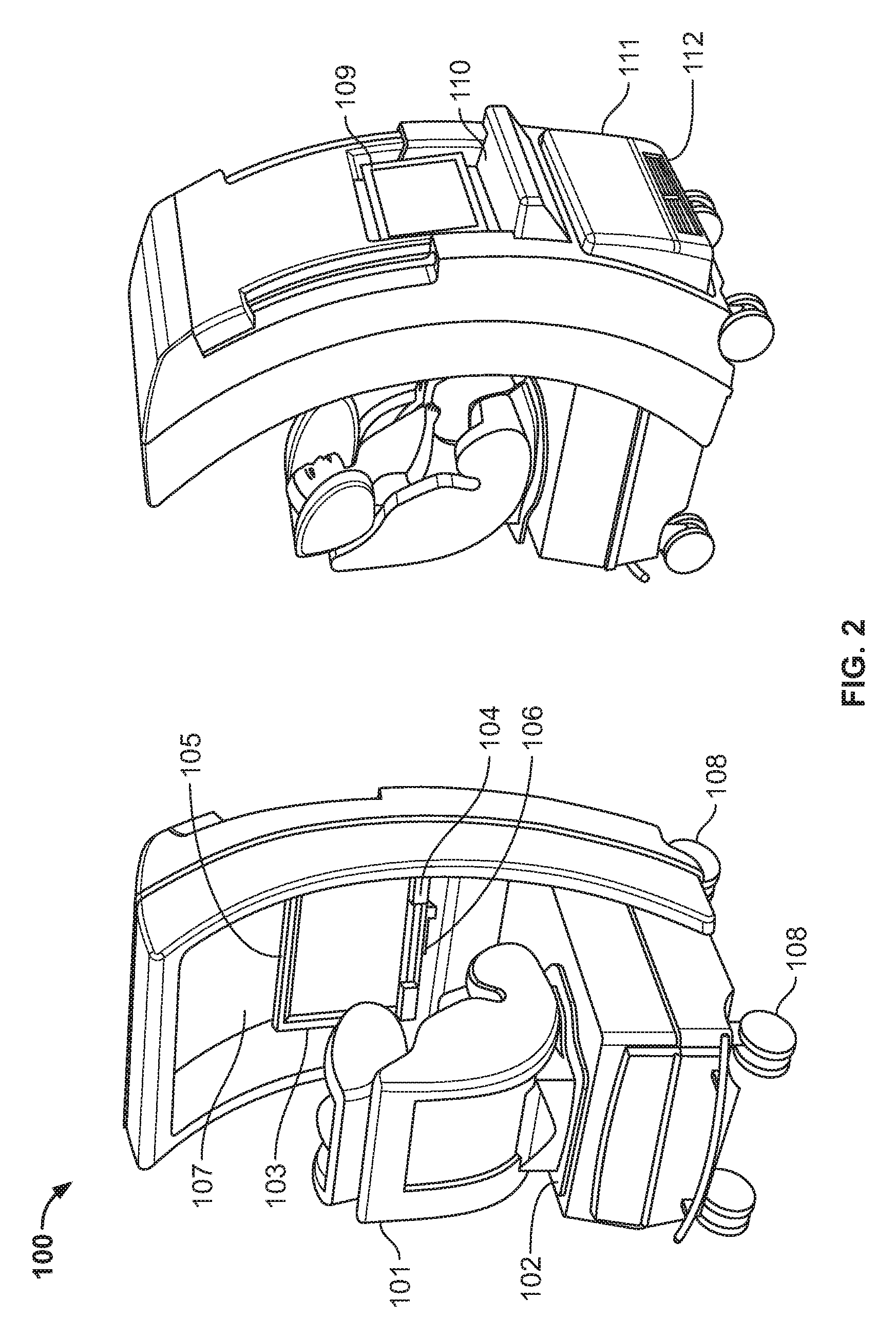Systems and methods for assessing infant and child development via eye tracking
a technology of eye tracking and infant development, applied in the field of system and method for assessing infant and child development via eye tracking, can solve the problems of reducing the effectiveness of treatment, poor outcomes, and poor sensitivity and specificity of the use of “best practice” tools, so as to minimize the linear distance from the display device to the individual's eyes, minimize or eliminate the effect of occlusion of the cornea by the eyelid
- Summary
- Abstract
- Description
- Claims
- Application Information
AI Technical Summary
Benefits of technology
Problems solved by technology
Method used
Image
Examples
Embodiment Construction
[0074]To provide an overall understanding of the systems, devices, and methods described herein, certain illustrative embodiments will be described. In some embodiments (described in greater detail below), the present disclosure relates generally to systems and methods for assessing the risk of developmental disabilities in very young patients (e.g., in the first 2-6 months of life). Although the embodiments and features herein are specifically described for use in connection with collecting and analyzing eye tracking data from subjects for the assessment, screening, monitoring, or diagnosis of autism spectrum disorders (ASD), it will be understood that the systems, devices, and methods may also apply to other developmental, or cognitive, social, or mental conditions, as well as other conditions, including but not limited to expressive and receptive language developmental delays, non-verbal developmental delays, intellectual disabilities, intellectual disabilities of known or unknow...
PUM
 Login to View More
Login to View More Abstract
Description
Claims
Application Information
 Login to View More
Login to View More - R&D
- Intellectual Property
- Life Sciences
- Materials
- Tech Scout
- Unparalleled Data Quality
- Higher Quality Content
- 60% Fewer Hallucinations
Browse by: Latest US Patents, China's latest patents, Technical Efficacy Thesaurus, Application Domain, Technology Topic, Popular Technical Reports.
© 2025 PatSnap. All rights reserved.Legal|Privacy policy|Modern Slavery Act Transparency Statement|Sitemap|About US| Contact US: help@patsnap.com



